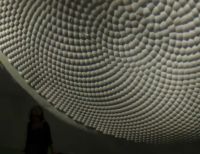Wearable devices have become part of our everyday life. For two decades, researchers have investigated them, not just as personal devices but to enhance our face-to-face social interactions, so-called social wearables. However, we have not seen widespread adoption yet, as most wearable products still focus on health-related functions.
Scholars have identified social factors and context as the essential barriers to adoption. These include aesthetics, social identity, cultural norms and privacy. Hence, there is a need to explore people’s lived experiences to fulfil the promises of social wearables. To this end, we investigate the utilisation of social wearables in the rich cultural tradition of wearing and adorning colourful boiler suits around Wappu.
Each student receives overalls from their student organization in a specific colour to show affiliation and group membership. Additionally, the students individually embellish their overalls over time, based on personal interests and achievements that give them, so to say, a batch of honour. These vivid traditions make an interesting case to study the future of digital clothing.
Studying clothing practices with co-design
We co-designed an interactive clothing patch called “Digi Merkki” based on this cultural practice with the students. It had two main functionalities. One function was LEDs showing different animations from afar based on the relationship to nearby people. Additionally, these LED animations are synchronised to support singing or other activities. The other function is a small display to show and trade pictures between participants.
We looked at how the students used Digi Merkki in a two-week elicitation diary study, including some organised events. We observed how the students used the digital patch as material in their existing social and cultural practices. Not only did Digi Merkki shape existing practices, but we also observed emerging social practices and how students navigated them.
For example, students started spamming each other, which was an unintended functionality. Here, it was fascinating that students engaged actively in meaning-making. A cat picture was shared especially for this kind of teasing when hijacking an interaction between two other people. This meaning of the cat then was adapted among all participants. However, some participants focused on propagating their unique idea, even to someone who previously refused this particular picture.
















